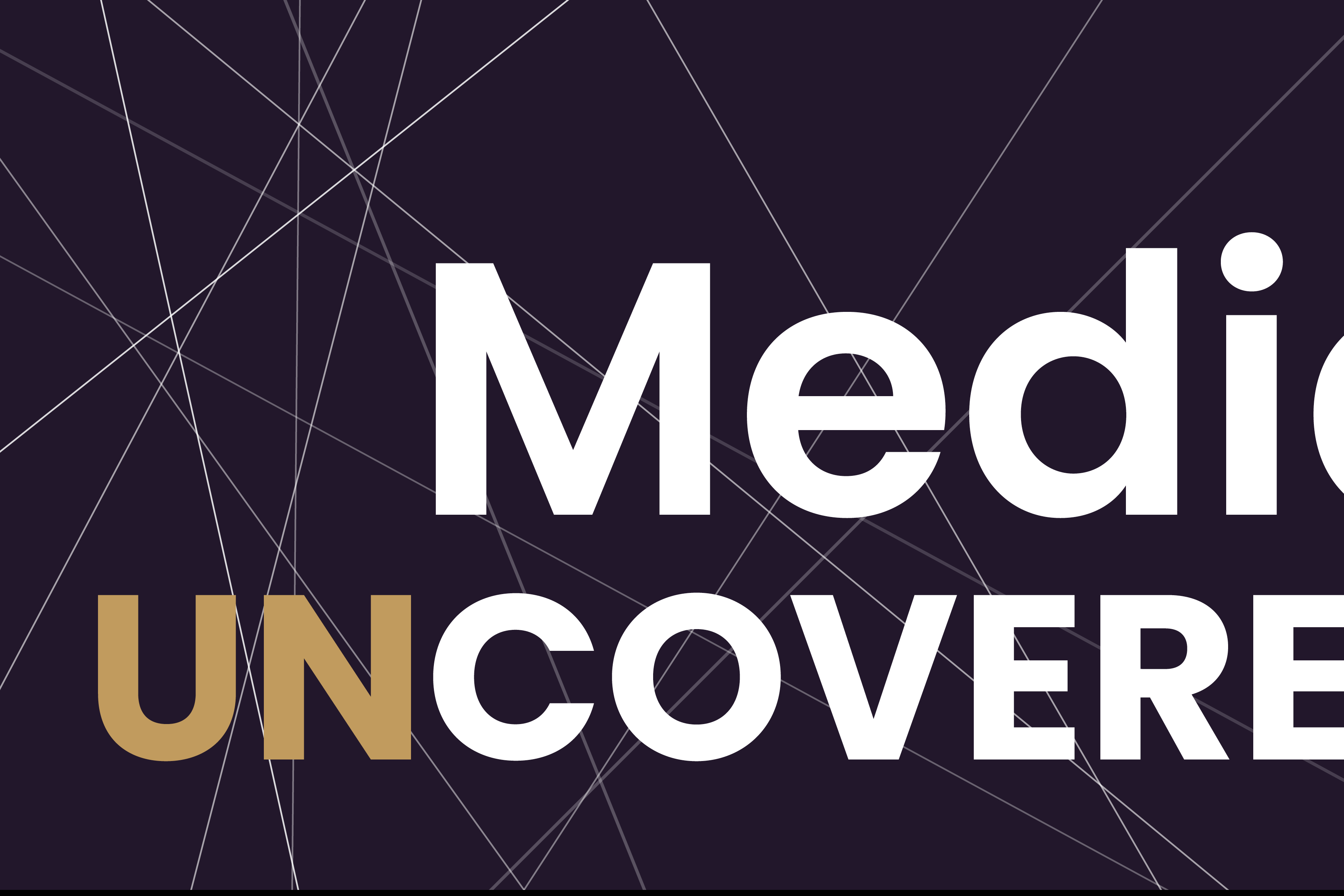PMA MEMBERS’ EXCLUSIVE
Ahead of World Press Freedom Day 2022, the Public Media Alliance hosted its second ‘PSM Unpacked’ session. Participants from PMA’s global membership discussed the challenge of digital harassment against journalists and media practitioners.
On 11 April, PMA hosted its second ‘PSM Unpacked’ session – an exclusive roundtable forum series for PMA members – to address how to provide digital safety for journalists and news organisations.
The session began with a panel hosted by PMA’s Advocacy Coordinator, Desilon Daniels, and featured ABC’s Social Media Wellbeing Advisor, Nicolle White, Joe Hill, CBC/Radio-Canada’s Senior Director of Security and Resiliency, and CPJ’s Emergencies Director, Lucy Westcott.
While the growth in digital technology has brought many benefits for journalists, news organisations and their audiences, it has also opened spaces that have become a breeding ground for hate speech and disinformation. As a result, new digital tactics and online disinformation campaigns have been deployed to attack journalists.
There is action being taken in this space. Social media and other big tech companies have claimed they are finding ways to tackle online abuse on their platforms, and the UN Human Rights Council also recently adopted an action plan for Member States to tackle disinformation and hate speech. But in the meantime, many public interest media organisations are taking it upon themselves to develop their own ways of protecting their staff from these types of threats and harassment.
The roundtable offered a dedicated space for PMA members and affiliate organisations to discuss this. Here are the key takeaways from the initial panel session featuring CBC/Radio-Canada’s Joe Hill, ABC’s Nicolle White, and CPJ’s Lucy Westcott.
THE CURRENT SITUATION
- Digital harassment against journalists has progressively worsened in recent years in many contexts. For instance, Mr. Hill said he had recognised shifts in the past six years where an anti-mainstream media bias gradually gained ground in Canada. Combined with divisions exacerbated more recently during the COVID-19 pandemic with anti-vaccine and freedom protests, and the scale of disinformation spreading during the Russia-Ukraine war, various narratives have been adopted to attack journalists online for their reporting.
- Most online abuse disproportionately targets women journalists, which reflects gender-based violence still experienced more broadly within society. Ms. White emphasised that 75% of the reports she receives are from female journalists. Key findings from research conducted by the International Center for Journalists (ICFJ) and UNESCO, also highlight that 73% of female journalists have experienced online harassment in some form, while 25% have received threats of physical violence, such as sexual harassment or death threats. Most concerning are the online threats that can often “spill into the real world” and lead to offline attacks. Intersectionality must also be considered since journalists of colour, journalists from the LGBTQIA+ community, and indigenous journalists are more likely to experience online abuse, particularly targeting their identity.
- Committee to Protect Journalists (CPJ) Emergencies Director, Lucy Westcott, emphasised that digital harassment is a global press freedom issue. She elaborated on some of the notable key trends of online safety and abuse used to silence, intimidate, or undermine the credibility of journalists. They include doxing (the public sharing and weaponisation of personal details) as well as phishing and hacking attempts.
- Election periods can often be fraught and emotionally difficult times and can cause an escalation of hostile behaviour against journalists.
- Although there are more channels for journalists to report incidents of online abuse and harassment, participants believe that this abuse still goes largely unreported.
“75% of the reports received are from female journalists” – Nicolle White, ABC Social Media Wellbeing Advisor
THE IMPACTS
- Abuse can have a silencing effect, especially where journalists re-think what they post online or step away from platforms
- Staff retention: female journalists in particular have considered leaving their beat or the journalism profession altogether
- Devastating mental health and psychosocial impacts for individual journalists as well as residual trauma for surrounding colleagues
- A detrimental effect on democracy: the more that journalists are harassed, silenced, or leave the profession, the less likely that power can be held to account and public conversations are hindered.
- The business aspect: such mental or psychosocial impacts can affect a journalist’s ability to do their job and can impact an organisation’s output also. Growing abuse can also be off-putting for young, upcoming journalists wanting to enter the profession.
Online abuse can have a detrimental effect on democracy: the more that journalists are harassed, silenced, or leave the profession, the less likely that power can be held to account and public conversations are hindered.
SOLUTIONS + TIPS
- Reporting mechanisms: Set up secure channels or systems through which journalists can report threats. For example, just over a year ago, CBC/Radio-Canada set up an email inbox for staff to share incidents of abuse, with the intention to reply to staff reports within 24 hours or less. This also includes reporting abuse to online platforms to raise their awareness of these trends.
- Establish an open culture: A culture shift and a concerted organisational top-down effort from management is required to encourage staff to safely report and document attacks and support them when they do. This shift also needs to ensure journalists feel comfortable coming forward with anything. As Mr Hill argued, if a journalist feels like they are being threatened, then it is a threat.
- A designated point of contact for abuse: Create roles that specifically deal with online abuse facing journalists. More public broadcasters are doing this – for instance, Nicolle White was appointed the ABC’s Social Media Wellbeing Advisor in October 2020 and DR appointed a Digital Harassment Officer in March 2022.
- A collaborative approach is important: Find solutions together. CBC/Radio-Canada’s #NotOk campaign is pulling the journalism industry together through sharing good practices and resources that are developed together. This benefits less well-resourced news organisations, and gets them engaged in fast moving conversations about online abuse. Collaboration also needs to happen internally: building resilience and emotional intelligence among staff and managers is encouraged to help staff speak out about trauma, especially with other staff members who have experienced similar attacks.
- Provide guidance, resources and guidelines: Ensure journalists who have experienced abuse have access to guidance which instructs the key steps and protocols that they can take to help bolster online privacy, wellbeing, and resilience, including physical safety tips. Recommended advice for targeted journalists is to step away from their social media accounts for a few days and allow friends or colleagues to monitor comments online to lessen the immediate impact of online abuse.
- Prevention is key: While there isn’t a solution that is 100% effective against online harassment, it can be delayed by implementing measures that make it difficult for a bad actor to use personal details against journalists: for example, switch off notifications, or limit replies on social media to reduce negative rhetoric.
- Preparedness and risk assessments: Create as much psychological and technological preparedness and awareness as possible, especially when commissioning content or covering topics of conversation that are more high risk, such as elections. Have a plan or risk assessment in place – not all risk assessment have to be rigorous – of all potential threats and protocols to mitigate such threats.
- Self-doxing or an ‘online spring clean’: For journalists – research yourselves to find out about what information about you is in the public domain, so you can delete this material. You can also adjust settings for how you would like to be contacted. Be cognisant of what you are sharing. Keep a separation between personal and professional online accounts. Speak to friends and family about social media hygiene to control what content you are tagged in.
- Remove the pressure for journalists to be on social media: Some public media organisations, such as the ABC, do not require their staff to have public profiles. If social media is causing abuse and harassment, journalists should not have to continue using it.
- Contextualising and de-personalising online abuse: Understand where abuse is coming from and why, and accepting that the core of online abuse is not the journalist itself but broader societal factors.
- Media literacy for the public: Increase public awareness and understanding of the role of journalists for the public.
RESOURCES
- The International Women’s Media Foundation (IWMF) Online Violence Response Hub is for newsrooms, freelancers, and individual journalists to safely report online abuse. This resource is part of the Coalition Against Online Violence, a project launched by the IWMF and ICFJ.
- The Committee to Protect Journalists Basic Preparedness Risk Assessment Form, a pre-assignment template for newsrooms. Available in several languages.
- The Public Media Alliance’s dedicated page of curated reports, resources and tools that news organisations, their staff and freelance journalists can refer to with regards to keeping safe.
KEEP IN TOUCH
Please share what else your organisation is particularly concerned about regarding online abuse against journalists and/or what your organisation is doing to tackle this issue.
Highlights of the forum will be included in a special World Press Freedom Day episode of PMA’s new podcast, Media: Uncovered, which will be released at the end of the month.
And is there a specific PSM issue that your public media organisation is interested in discussing? Are you looking for solutions to a key PSM challenge? Or perhaps you are eager to interact and network with like-minded organisations? We are always eager to hear new ideas. Let us know by emailing us at editor@publicmediaalliance.org
Header image: Abstract tech background. Floating Numbers HUD Background. Matrix particles grid virtual reality. Smart build. Grid core. Hardware quantum form. Credit: Dmitriy Rybin / Shutterstock.com
Related Posts
9th December 2021
Digital “preparedness is vital” – ABC’s Social Media Wellbeing Advisor
Journalists often face barrages of…
30th November 2021
PSM Unpacked | Commercial funding for public media
In our first PSM Unpacked roundtable,…
24th September 2021
Canada: PMA deplores online harassment of journalists
PMA joins CBC/Radio-Canada in voicing…



